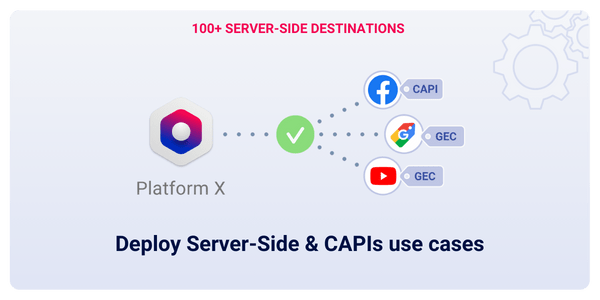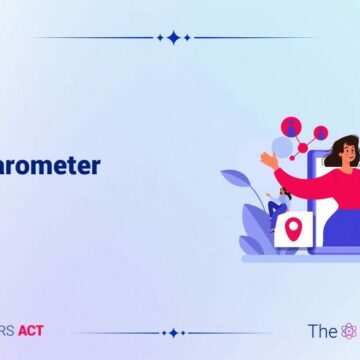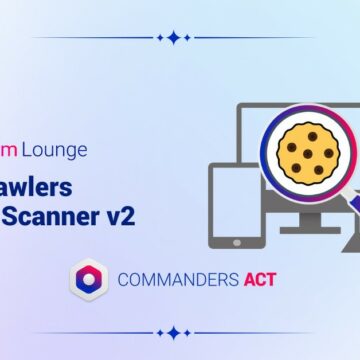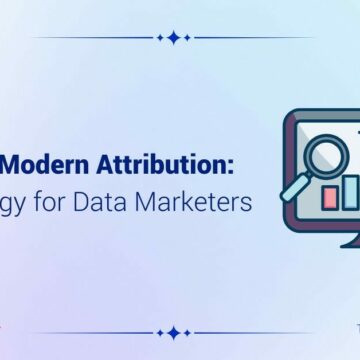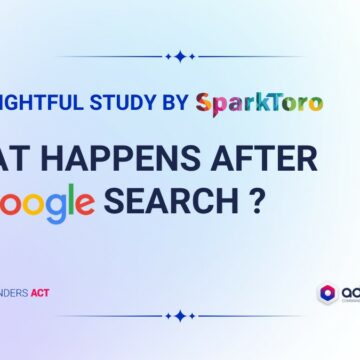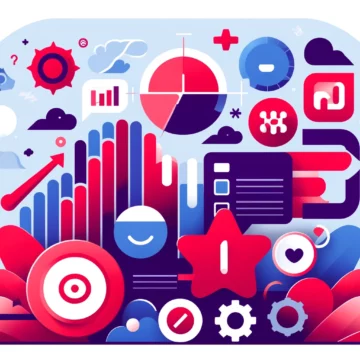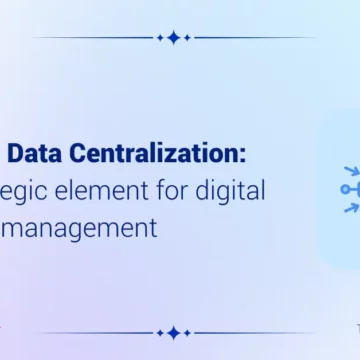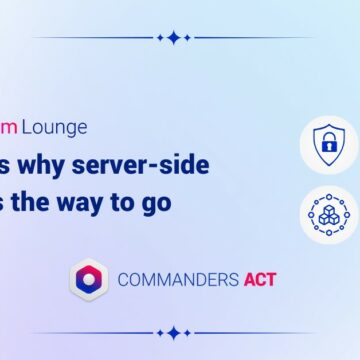Road to Personalization : Improve Customer Experience
22/08/2025 |
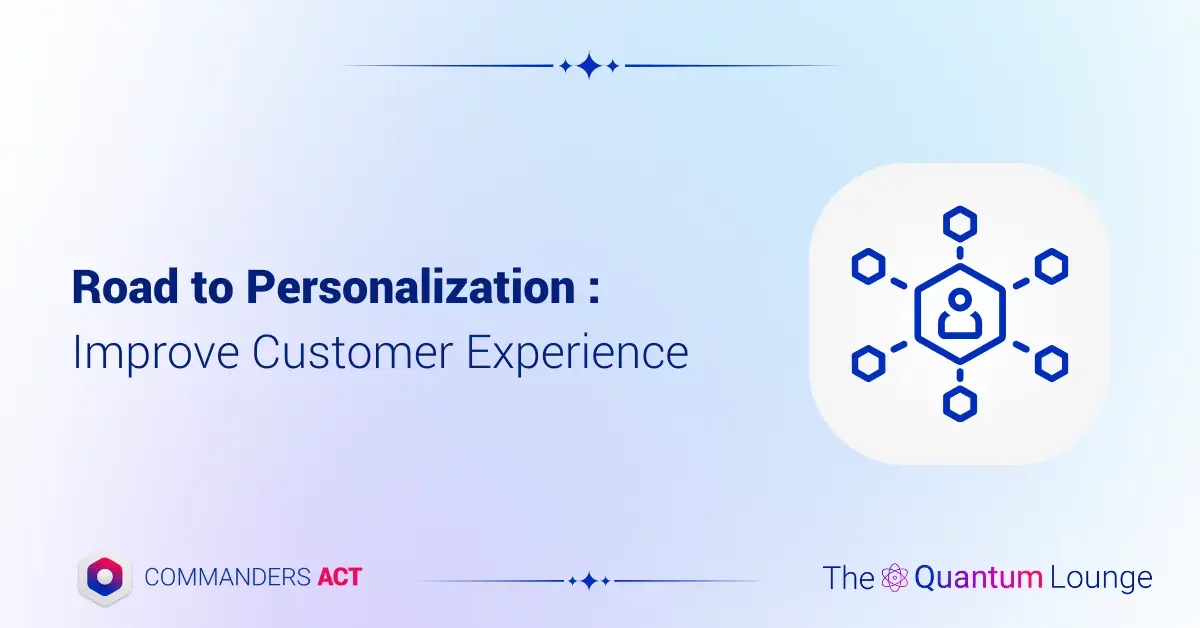
Personalized customer experiences have become a marketing imperative in today’s data-driven world. Customers now expect brands to tailor interactions to their needs – in fact, about 80% of consumers are more likely to purchase from companies that personalize experiences. As third-party cookies tend to disappear and privacy regulations rise, first-party data has emerged as the most valuable resource for delivering these tailored experiences. Marketers who harness first-party data effectively can reap significant rewards – higher revenue, lower contact acquisition costs, better data quality…
Personalized digital experiences : Tools and Solutions Needed in Your Tech Stack
First and foremost, you need to collect data : at every touchpoint you must have tools to capture data. This includes web and mobile analytics (for on-site/app behavior), CRM & marketing automation platforms (for engagement data)… To make this easier, you can turn to TMS (Tag Management Systems) and implement server-side tracking. Also, don’t forget compliance, so a CMP is crucial to gather consent and permission for data collection and treatment.
Getting data is cool but of course this isn’t the final step : you need somewhere to store data and process it. While a CDP (Customer Data Platform) will handle much of this, it often works in conjunction with your data warehouse. For instance, a cloud data warehouse can store large volumes of event data that the CDP can access or aggregate as needed. A dedicated data environment in a cloud warehouse to prepare and secure the data before feeding it into the CDP can be a solution for ensuring high-quality input for a CDP.
Which brings us to the key element in the road to personalization : the CDP. A Customer Data Platform ingests data from all the sources above, unifies customer profiles, and allows segmentation and activation. When choosing a CDP, organizations consider factors like identity resolution capabilities, real-time data processing, integrations with other marketing tools, and robust security/compliance features (to handle sensitive customer info). The CDP should easily connect with your channels (email service, ad platforms, website CMS, mobile push, etc.) so that activating a campaign with personalized content is seamless.
Lastly, you need the tools that actually deliver the personalized experience to the customer. These could be your website content management system with personalization modules, A/B testing and personalization engines, email campaign tools, mobile marketing automation, digital advertising networks, call center or sales tools, and so on – whichever channels you use to engage customers.
In summary, to leverage first-party data at scale you’ll typically use a combination of data collection tools, a CDP and execution channels. With the right integration, the flow looks like: capture data → unify in CDP → push out personalized experiences via marketing channels.
Let’s get started… First step : Data !
What is First-Party Data and How to Collect It
First party data : what is it ?
First-party data refers to information your company collects directly from customers and prospects through their interactions with your brand. Because it comes straight from your audience (with consent), it’s high-quality, reliable, and relevant to your business. It allows not only for great governance, but also to lose some dependance on third-party data, which can be unreliable, expensive and sometimes borderline legal.
First-party data you might already have :
- Web and App Behavior: On-site analytics tracking page views, clicks, time spent, and in-app events that reveal customer interests and intent.
- Subscriptions and Engagement: Email newsletter sign-ups, email engagement (opens/clicks), and mobile app usage data.
- Customer Purchases and CRM Data: Transaction histories, loyalty program activity, and CRM records show what a customer has bought and their relationship with the brand.
First-party data you could easily get :
- Customer Support and Offline Touchpoints: Call center transcripts, in-store purchases, and loyalty program usage are additional first-party data sources. Even offline behavior can be captured and linked to customer profiles.
- Surveys and Preference Centers: Data that customers explicitly provide – such as survey responses, preference center inputs, and profile information.
First-party data : how to collect it ?
There’s a big part of first party data that, as we previously stated, you might already have : your TMS and Martech Stack take care of all this. What you don’t know is how to collect the rest of the data, and the short answer would be : Encourage customers to willingly share data by providing value in return. Easier said than done, right ? Actually, it might not be as hard as you might think.
Offering a loyalty reward for completing a profile, interactive quizzes that both entertain and collect preferences, or gated premium content in exchange for an email address, are just some of the examples that come to mind. But you can always push the thinking a little further… Leading marketers focus on key journey touchpoints (onboarding, checkout, post-purchase) to gather information with minimal friction. For example, during signup you might ask a new subscriber for content preferences, or after a purchase prompt them for a product review or feedback (capturing their sentiments). Transparency and trust are critical – customers are more willing to share data if they know it will be used to benefit them with relevant, personalized offers.
Now that you have the data, what do you do with it ?
Gathering first-party data is the first step, but making sense of it across various channels and systems is a major challenge. In many organizations, customer data lives in silos – web analytics data in one tool, purchase history in a sales database, email interactions in a marketing platform, and so on. These fragmented bits of information don’t automatically connect to each other, preventing marketers from seeing the full picture of each customer. For example, you might have a customer identified by an email in your newsletter system, by a cookie ID on your website, and by a customer ID in your POS records, all without linkage. Such fragmentation makes it difficult to deliver truly seamless personalization.
There’s also the issue of data consistency and quality. Different systems may format or update data differently. Data may be duplicated or incomplete across silos. Without integration, it’s hard to apply analytics or derive insights – you can’t easily identify high-value segments or trigger real-time offers if the data isn’t unified. This is where CDPs become invaluable. Marketers increasingly turn to CDPs to solve the silo problem by providing a single, centralized hub for first-party data.
What is a Customer Data Platform?
A Customer Data Platform is a software solution that centralizes and manages customer data from all your sources to create a unified, 360° customer profile. Unlike a CRM (which typically holds only sales or support data) or a data warehouse (which may require technical querying), a CDP is built for marketing use cases: it ingests data from multiple systems, resolves identities, and makes the unified data easily accessible for analysis and activation across channels. In essence, a CDP serves as the single source of truth about your customers for personalization efforts. To illustrate key characteristics of a CDP, let’s dive into PlatformX, Commanders Act’s cookieless marketing data platform. Here are a few of its main features.
- Data Integration from All Sources: A CDP can pull in first-party data from websites, mobile apps, CRM databases, email platforms, ad platforms, point-of-sale systems, and more. It accepts various data types – behavioral events, customer attributes, transaction records, etc. – and standardizes them in one place.
- Identity Resolution: One of the CDP’s most critical functions is to match and merge data to the right individual. The “Master ID” is a persistent internal identifier managed by the Commanders Act platform, constructing an ID graph for continuous user linkage. This feature supports recognizing and reconnecting with users over time. This ensures each customer has a single, comprehensive profile rather than fragmented records.
- Unified Customer Profiles: Once identities are resolved, the CDP maintains a unified profile for each customer that continually updates with new data. Think of this profile as a rich timeline or database of that customer’s interactions and attributes: demographic info, products viewed, purchases made, emails opened, customer service tickets, loyalty status, and so on. Having this holistic profile is foundational for personalization – it’s the knowledge base that drives relevant experiences.
Of course, as a european company, PlatformX follows the “privacy by design” and “compliant by design” maxims. If you opt for another platform, make sure that they are honoring privacy regulations : storing and processing data inside the EU, following the guidelines of your market’s regulation entity…
In summary, a CDP is the hub that turns disparate first-party data into a coherent asset. It is built to support marketing personalization by ensuring every customer interaction, from any source, updates one master profile. Next, we’ll see how marketers leverage these unified profiles to create personalized experiences.
How CDPs Enable Personalized Experiences
Once a CDP unifies customer data into complete profiles, it becomes the engine behind personalization. Rather than guessing or relying on fragmented insights, marketers can use the CDP to truly understand audiences and act on that knowledge across every channel. Here’s how that plays out in practice.
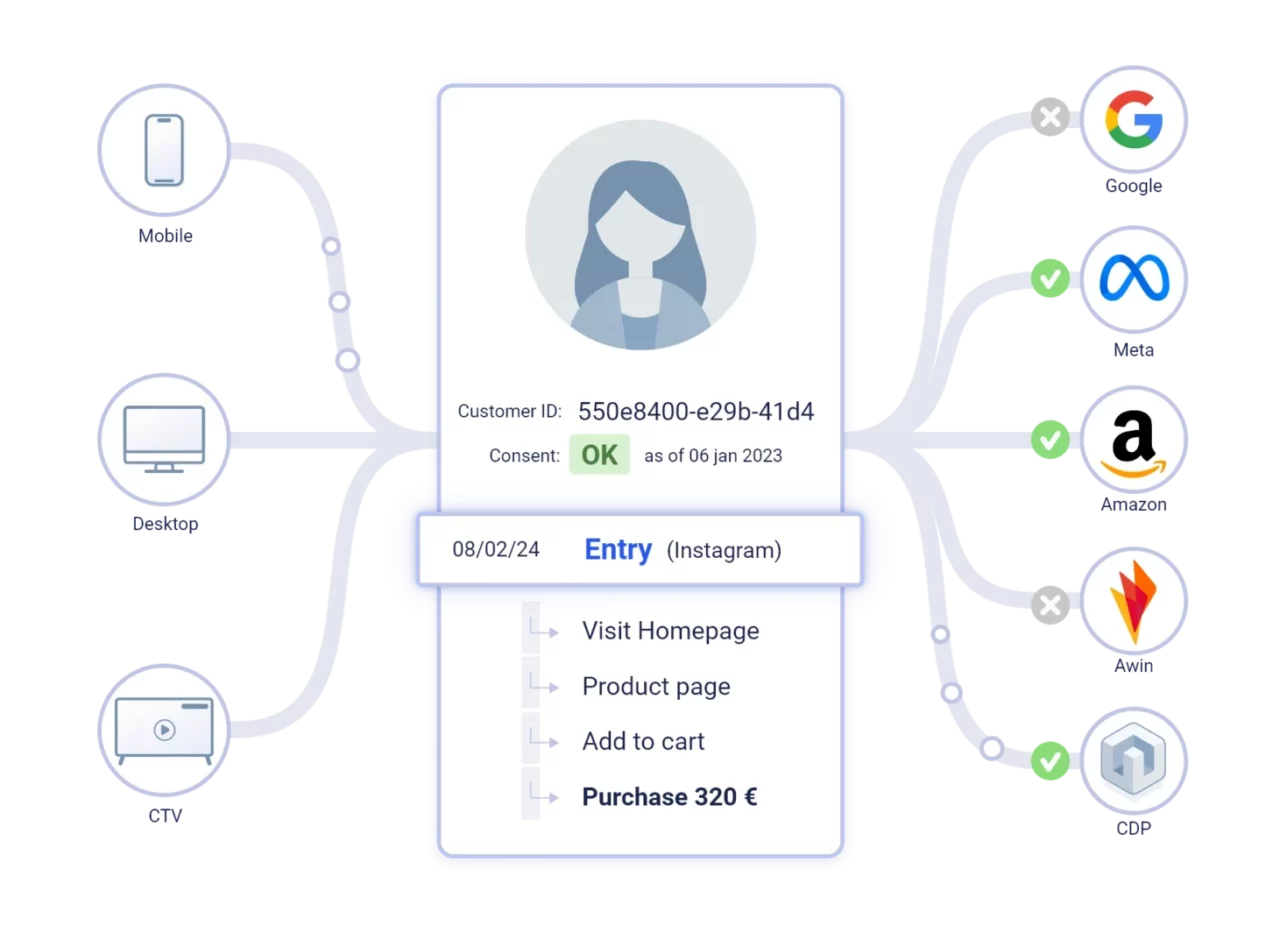
The first big shift a CDP enables is moving from broad categories to precise audience segments. Because all behaviors and attributes sit in one place, marketers can define audiences with incredible granularity—say, “high-value customers who haven’t purchased in 30 days” or “subscribers engaging heavily with sports-related content.” More importantly, these profiles update continuously. When a customer browses a product or clicks on an email, that action can immediately shift which group they belong to. This creates the foundation for campaigns that feel relevant, not generic.
Personalization isn’t only about who a customer is—it’s also about when and where you reach them. Modern CDPs can process signals in real time, allowing brands to respond to behaviors as they happen. Because the CDP connects to multiple engagement tools, personalized nudges remain consistent whether the customer is online, in-app, or in-store. Beyond segmentation and triggers, CDPs also help decide what to show each customer. By combining first-party data with analytics and predictive modeling, they can highlight products, articles, or offers that fit individual preferences and future needs. That might mean suggesting accessories to match a recent purchase or detecting churn risk and surfacing a loyalty reward to keep them engaged. Over time, the CDP’s insights guide not just single interactions but overall strategy, ensuring that personalization efforts continually learn and improve.ne” experiences – treating each customer based on their unique profile. The tangible benefits include better targeted messaging, more consistent cross-channel experiences, and higher customer satisfaction, all driven by the intelligent use of unified data
Why is personalizing your customer’s experience so important ?
Personalization has shifted from being a “nice touch” to a core requirement of modern marketing. Customers expect brands to recognize their preferences and respond accordingly, and the data backs up why this matters so much for business performance. Here are our Top 3 reasons why we think it’s pivotal to your strategy.
1. Personalized experiences drive engagement and build loyalty
When customers feel understood, they’re far more likely to engage. Personalized product suggestions, tailored content, or well-timed offers can dramatically increase conversion rates—brands using first-party data for personalization have reported revenue growth nearly three times higher than their peers. Beyond the initial sale, personalization also deepens loyalty. Recognizing someone’s purchase history or celebrating milestones with them makes the relationship feel less transactional and more personal. Starbucks is a strong example: by using app and loyalty program data to customize promotions—sometimes even gamifying them—the company tripled engagement and doubled redemption rates compared to blanket campaigns.
2. Personalization makes your Marketing department more efficient
Personalization isn’t only about better experiences; it’s also about efficiency. Targeting the right people with the right message reduces wasted impressions and improves return on investment. Instead of spreading budget across broad, generic campaigns, marketers can allocate resources to the audiences most likely to respond. Studies show that first-party data strategies can reduce marketing costs by half while improving campaign performance, a combination that’s especially valuable in competitive or resource-constrained environments.
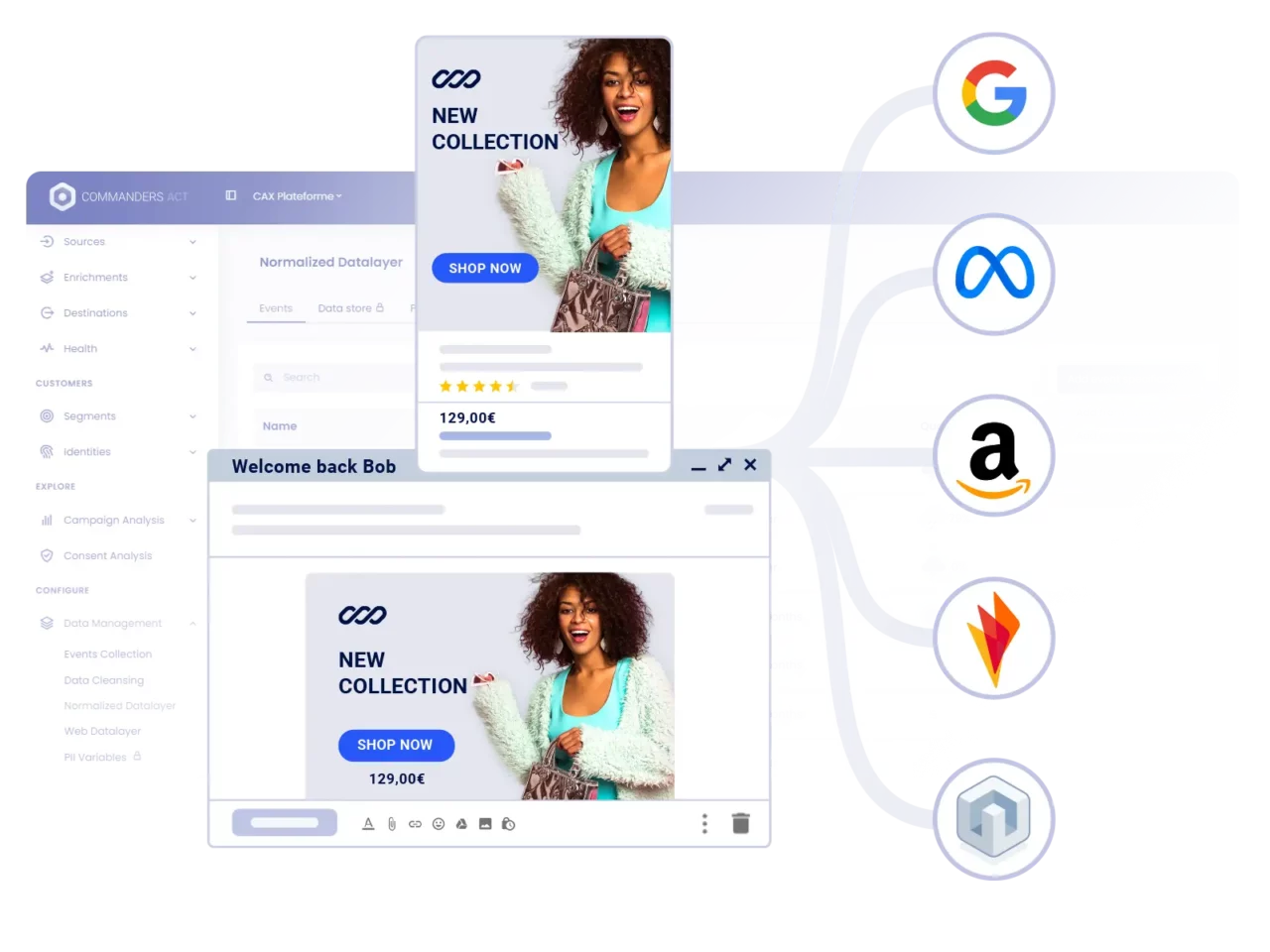
3. Making your customer journey unique makes you stand out
In markets where consumers are constantly bombarded with choices, personalization is one of the most effective ways to stand out. A brand that tailors its communication feels attentive, almost human, while one that relies on generic messaging risks alienating its audience. Customers today don’t hesitate to switch to competitors if they feel a brand doesn’t “get” them. On the flip side, companies that consistently deliver personalized solutions often secure loyalty before rivals even have a chance.
